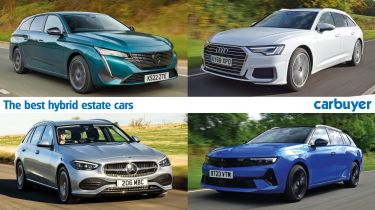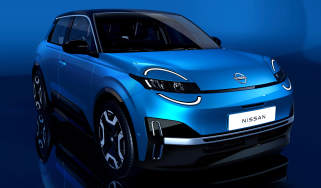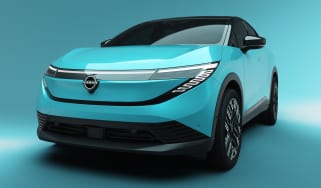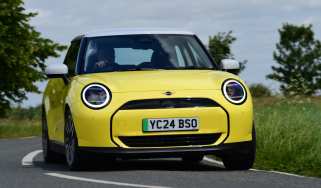Mercedes C-Class Estate review – a classy load-lugger and great PHEV


You no longer have to drive a tiny city car with a pint-sized engine in order to achieve the best fuel economy – the latest technology makes these hybrid estates some of the most fuel-efficient cars on the road. They provide drivers with small bills, as well as the practical boot space that estate cars are famed for.
Hybrid technology has progressed rapidly over the past decade, and there are now three main types of hybrid car to choose from. This list focuses on self-charging hybrids (also referred to as full hybrids) and plug-in hybrids (PHEVs) – the two systems that provide the greatest boost in efficiency. The third system is found in mild-hybrid cars, but these are excluded from this list due to their limited electrical assistance.
Practically every hybrid car today uses a petrol engine in conjunction with an electric motor – diesel hybrids are now few and far between. That being said, today’s petrol hybrid estates are more efficient than ever and will almost certainly be cheaper to run than a conventional estate car. As an added bonus, the electrical assistance can provide an extra shove of performance when needed, so plug-in hybrids are often among the fastest models in a range too.
These are the best hybrid estates that are worth buying this year. For a more general guide, read our list of the best estate cars, or if you want a more elevated view of the road, we have a list of the best hybrid SUVs, too.
The Mercedes C-Class, in C 300 e form, was our PHEV champion at this year’s Carbuyer Best Car Awards, retaining its crown from 2023. The C 300 e gives car buyers the opportunity to drive most of their daily miles in electric mode, thanks to its class-leading 62-mile range. The 1.5-litre petrol engine is available for those longer journeys, or days when you can’t charge up, making the C 300 e a versatile option for families and business drivers.
Inside, the C-Class feels like a slimmed-down top-of-the-range S-Class and is comfortable on long journeys. It’s so good that in many ways it isn’t just competing with direct rivals, but may tempt those who would traditionally spend six figures on a much larger executive saloon in the Mercedes range.
The BMW 330e is now available as a Touring estate, as well as the saloon version. That means that you can now have the luxury, performance and low running costs of BMW’s small plug-in hybrid executive car with a much more usable boot. And that’s handy because, like many PHEVs, the batteries do eat into the boot space a little. It also means that you could use the 330e for family trips away, as well as all your business trips during the week.
The 3 Series’ popularity with company-car drivers means the 330e is poised to overtake the classic 320d, so we’re pleased to report that the 330e is as good as you’d expect. It’s great to drive, like any other BMW 3 Series, and has a 37-mile electric-only range. Spend a bit more, and you can have BMW’s excellent xDrive four-wheel drive system fitted, adding an extra dimension to the 3 Series Estate’s do-everything capabilities.
The current Skoda Superb has been around for a few years now and continues to score well in our owner reviews. It also scores well with us, winning our Best Used Estate Car at the 2024 Carbuyer Best Car Awards. Car buyers wanting a bargain may want to visit their local dealer sooner rather than later – the facelifted Superb will be arriving later this year.
Badged Superb iV, the plug-in hybrid combines a 1.4-litre petrol engine and electric motor, powered by a 13kWh battery. This gives its efficiency figures a significant advantage, with 244.8mpg and 26g/km of CO2 quoted in the brochure.
Skoda offers its hybrid powertrain on a range of trim levels and all are well-equipped to offset the higher initial price compared to a petrol or diesel engine. The boot size is reduced because the underfloor storage is now a place to store the charging cable but the boot floor is flat – some rivals have awkwardly shaped boots.
Audi is famous for its range of ‘Avant’ estate cars, and the A6 Avant is just as sleek, practical, and comfortable as its forebears. The current model comes with a plug-in hybrid engine option known as the 50 TFSI e, adding excellent fuel efficiency to the A6’s list of strengths.
It uses a 2.0-litre petrol engine paired with an electric motor to make 295bhp, providing suitably nippy acceleration from a standstill. It can also manage over 30 miles with electric power alone for shorter trips around town, and its low 30g/km emissions figure means it sits in a low BiK band for company car drivers.
The Audi A6 Avant boasts a fantastic interior that uses technology from the larger A8. All of its three trim levels are well-built with quality materials, and every Avant estate model gets a power-operated tailgate. Even the entry-level Sport trim comes with premium goodies such as four-zone climate control, a rear-view camera and Matrix LED headlights, while upgrading to pricer models brings sportier exterior bodywork and even more tech.
Like the saloon, the estate version of the new Mercedes E-Class is also available as a plug-in hybrid, although the diesel hybrid engine of the previous generation has been dropped. Fear not, for the latest E 300 e petrol hybrid is actually more efficient than the old diesel, with tiny CO2 g/km and sky-high MPG figures.
The 2.0-litre petrol engine and electric motor combine to produce 308bhp – a healthy number on paper, but the heavy batteries dull the performance somewhat. Not that it really matters, as buyers are far more likely to choose an E-Class Estate for its luxurious interior, cutting-edge gadgets and refined ride quality over outright performance. The C-Class estate offers nearly the same experience for less money, but if you want the most cosetting interior, the E-Class is the one to go for.
Unfortunately, Mercedes hasn’t managed to package the batteries as well as some cheaper cars – like the Superb – so the boot has a cumbersome step that reduces practicality. However, the boot in the Estate is still much more usable than the one found in the E-Class saloon.
The world’s best-selling car, the Toyota Corolla, got a handy facelift in 2023 and is available in the Touring Sports estate bodystyle with two hybrid powertrains. The most popular of the two is likely to be the 1.8-litre engine and electric motor, which is shared with the discontinued Toyota Prius.
A 2.0-litre petrol-hybrid is also available, providing welcome extra performance without much of a drop in MPG. Economy of around 60mpg is possible, while the 598-litre boot space makes it a much more practical choice than the Corolla hatchback. Sharp styling and plenty of kit add to the Toyota’s appeal, as does the price - it’s the most affordable car on this list.
Toyota owners can also benefit from up to 10 years of warranty cover, activated when servicing with a Toyota dealership. This provides great peace of mind for car buyers wanting to keep their car for the long term.
If Cupra’s performance-focused hatchback – the Leon – isn’t quite roomy enough for you, you’ll be pleased to know an estate variant is also offered. Based on the Volkswagen Golf, and with a sportier image than its SEAT Leon twin, the Cupra Leon Estate is spacious, fun to drive and comes with a solid, high-quality interior.
The 306bhp petrol-powered version is the model to pick if performance is your priority, but the petrol plug-in hybrid model delivers just as much fun through the corners while returning excellent fuel economy. With the 1.4-litre petrol engine switched off, the electric motor can power the Leon Estate for up to 35 miles – not quite as impressive as some other cars on this list, but more than enough for most drivers’ around-town needs.
Entry-level plug-in hybrid models come with a respectable 201bhp and decent level of kit, but upgrading to ‘VZ’ specification brings an additional 40bhp and a lengthier equipment list.
With quirky styling inside and out, the Peugeot 308 SW certainly stands out in today’s estate market. Those looks are backed up by a solid range of engines, including two plug-in hybrid options. Neither feels as polished as some rivals on this list, with a slightly clunky transition from petrol to electric power, but fuel economy is impressive, as is the 42-mile electric range.
In terms of practicality, the 308 SW provides much more boot space than its hatchback twin, although both models suffer from a slightly cramped passenger space in the second row of seats. The PHEV system only eats up a small amount of boot space, meaning you still get a respectable 548-litre void to fill. Elsewhere in the cabin, you’ll find upmarket materials and plenty of kit, including Peugeot’s love-it-or-hate-it i-Cockpit dashboard.
The Peugeot 308 SW is compromised in some areas, but the trade-off may be worth it for you if you’re fond of its unique looks and respectable electric range.
The latest Vauxhall Astra does many things well, from its comfy ride to its stylish interior, and the Sports Tourer estate variant brings a chunk more boot room. Combined with a plug-in hybrid engine, the Astra Sports Tourer is a truly excellent all-rounder, despite not excelling in any one category compared to its rivals.
Sharing its platform with the Peugeot 308, the Astra Sports Tourer offers the same choice of two plug-in hybrid engines. The 178bhp 1.6-litre petrol hybrid is the cheaper of the two and, while there’s nothing particularly special about the way it drives, it’s pleasant to drive around town in its electric driving mode, returning excellent fuel economy on longer trips provided you keep the battery topped up.
Vauxhall offers a 222bhp variant of the plug-in Astra Sports Tourer, too, but the added power is offset by the hybrid system’s weight, so it’s not as fun to drive as its pure petrol counterparts. It’s no sports car, so we recommend sticking to the cheaper plug-in version.
Peugeot has upped its game in recent years, as the brand tries to reinvent itself as a more premium proposition. Its Peugeot 508 is sleek and low-slung, and the SW estate version, while slightly more upright and less sporty-looking, offers an extra dose of practicality with its 530-litre boot. We think it still looks pretty sharp, too.
In 2020 Peugeot added the plug-in hybrid version of the 508 SW with 222bhp from a 1.6-litre engine and electric motor. It’s capable of up to around 40 miles of electric-only running, so it can handle plenty of short trips.
Peugeot even offers a performance version of the 508 SW hybrid, dubbed the PSE (Peugeot Sport Engineered). This version has 355bhp making it the most powerful Peugeot ever built, and sits alongside the saloon version as a halo car for the brand. It can dispatch 0-62mph in just 5.2 seconds, and straddles the line between sporty and comfortable very well, making it a contender as a performance estate.
Estate cars can be as spacious as an SUV, but often have similar running costs and price tags to a hatchback. Bigger boots and a low-loading lip make them a favourite choice for UK families with dogs, and many are just as adept at towing as large SUVs, adding to their practicality. Thanks to their saloon or hatchback underpinnings, estate cars also drive much the same as regular cars, helping them appeal to keen drivers, while a few also get all-wheel drive to help in poor conditions.
Diesel engines were once a popular choice for estate cars in the past because their pulling power and economy are well suited to load-lugging. However, diesel’s decline in popularity has prompted manufacturers to introduce estates with 'self-charging' hybrid and plug-in hybrid (PHEV) powertrains. There’s a wide range of options and brands to choose from at the moment, with some more affordable options alongside classic names from more premium manufacturers.
Cars in the PHEV class always perform very well in the WLTP emissions test and many have very low company-car tax rates as a result. They make a lot of sense for businesses, especially as diesel cars typically sit in a higher Benefit-in-Kind (BiK) band than petrol cars with the same emissions.
Don't mind spending a bit more time and money at the fuel pumps? Check out our list of the top 10 fast estate cars...



New Nissan Micra is a Renault 5 in Nissan clothing

New Nissan Leaf is here! Groundbreaking EV has morphed into an SUV

Best car leasing deals 2025: this week’s top PCH offers


